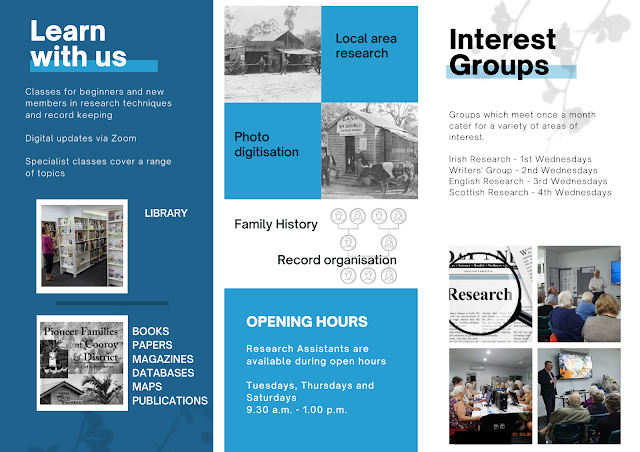Early seamen in Australian ports
 |
Port Adelaide, looking from the Company's Basin. 1867.
SLSA https://collections.slsa.sa.gov.au/resource/B+948 |
Masters and Mates
The job of a Clerk required he must be able to write clearly and such was the case in the Board of Trade Registers that kept track of seamen, as they qualified for their certificate as Mates or Masters. In this post, I am referring to the certificates that are found within the Australian Colonial Joint Copying Project which can be found here
online through Trove. These registers cover seamen from across the world who plied the seas in colonial times from 1874 until 1921. Some obtained their Board of Trade certificates across different colonies and States.
I decided to find all the South Australian-born men from each of the registers. The best procedure seemed to be to go ahead and transcribe those found which would then be useful for other genealogists searching for their South Australian seamen.
I set up a spreadsheet with the following headings
No. of certificate, Name, Date of Birth, Place of Birth, Certificate granted, Date of certificate, the Number of the image in the microfilm where it appeared and lastly, the Source with a link to that page of the microfilm.
The registers often gave one, two or three first names, very useful for identifying an individual and matching him up with other records. The date of birth as seen above is just the year. The place where they were born is under the headings of Born at and County but often these were filled with a city or suburb, county or indeed country, sometimes a combination of all of these.
The next area details the sort of certificate awarded with the date it was recorded. Certificates were awarded for Only Mate, Second Mate, First Mate and Masters, so a seaman can be followed through the years if he progressed up the ladder. There are also distinctions between Master of a sailing ship and Master of a steamship.
Reflections on transcriptions
Generally, the handwriting in these records is clear and easily read but occasionally I needed to search the internet for a place name previously unknown to me Karlshamn, Sweden could have been incorrectly transcribed as Karlshainn as an errant dot on the paper could change the first loop of the m into an i.
Viewing the records - some considerations
Each page of the microfilm has to be selected then enlarged to be able to read the text. This involves multiple clicks for each image not so great for potential RSI. The back and forward buttons revert the images to the original size. An alternative method is to download a microfilm or part of it as a PDF file. This can be enlarged to a suitable viewing level just the one time before scrolling through all the pages in the file.
 |
From the second Victoria file, I could choose just the images that had been recorded in South Australia Victoria, Includes South Australia, 1916–21 https://nla.gov.au/nla.obj-743616295
|
Limitations
Originally I commenced transcribing all the records listed, a huge job. I needed to think about where and how the records would eventually be stored. I decided this would be better limited to a narrower field of interest, South Australian records but that would still include those recorded in all the colonies including New Zealand.
Place names – shire, county or country?
It was sometimes necessary to distinguish between place names adopted in Australia from the original places in England, Ireland and Scotland. e.g. Birkenhead in England or South Australia.
Sometimes place names such as Lerwick were listed as Shetland and other times as Scotland.
Names
It would have been better had I separated the surname and first names into separate columns but having used a spreadsheet this is easily achieved by using the Text to Columns feature in Excel or Split text to columns in Google sheets.
Sometimes names were recorded differently for the same man so Douglas, Archibald Home of West Australia became Douglas, Archie when he qualified for 1st mate in 1916.
Additional details
Here is Thomas Hughes Owen of Holyhead. On Certificate 395 he is made First Mate then Certificate 436 in 1894 has him certified as Master with death details included. I did not add any of these extra details to the spreadsheet but the link to the images is recorded. As family historians we know to always look at the original image if possible.
Ellis Thomas Tree claimed that he was born in Adelaide (South Australia) when he was awarded his Second Mate certificate in Auckland, NZ. There does not appear to be a record for his birth in the South Australian indexes but there are other members of a Tree family born in years just after 1851. Perhaps this is the only place that his birth and death details are recorded.
Access to the Data transcribed
In the future, the data will most likely be added to the databases at
Genealogy SA but in the meantime, if you have a South Australian-born man who has disappeared from records you have searched, he may be listed here. If you are reading this blog in the middle of May 2022 I may be able to direct you to a record for him, ask me in the comments.
Under consideration
There are Registers of certificates of competency.
Engineers: colonial, 1877-1921 [microform]/ as filmed by the AJCP. It lends itself to transcription........ Have you considered transcribing some records for your genealogy society?















